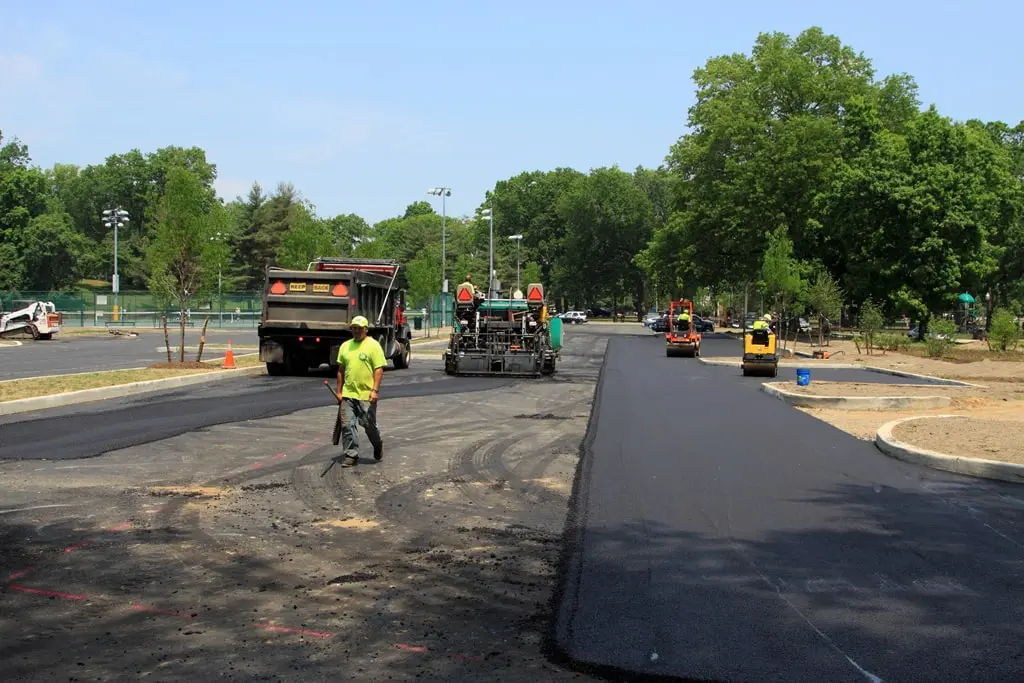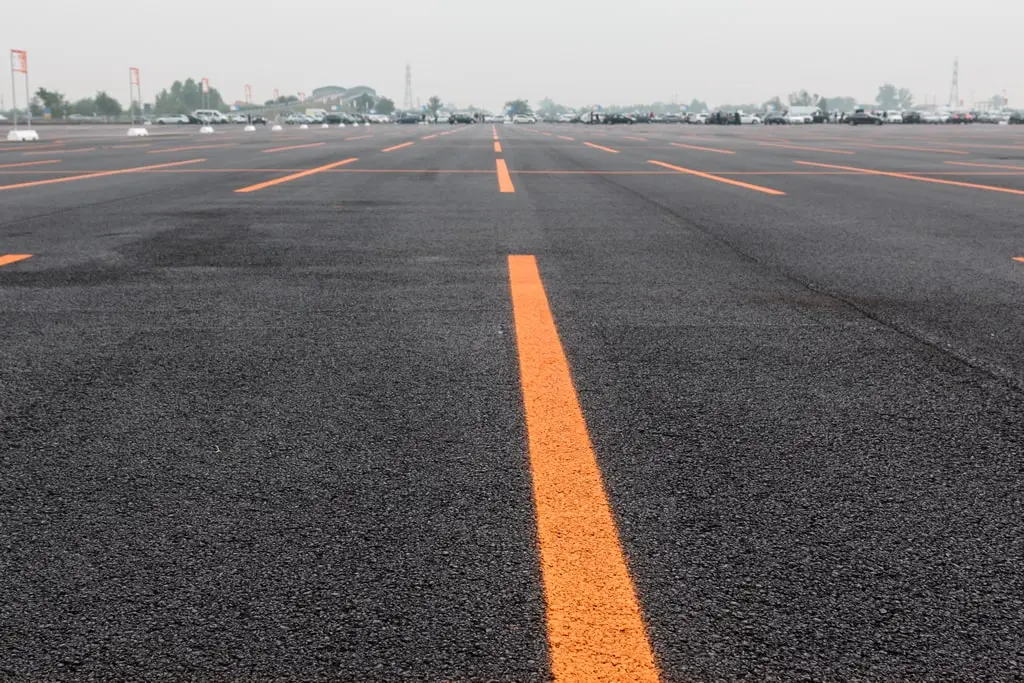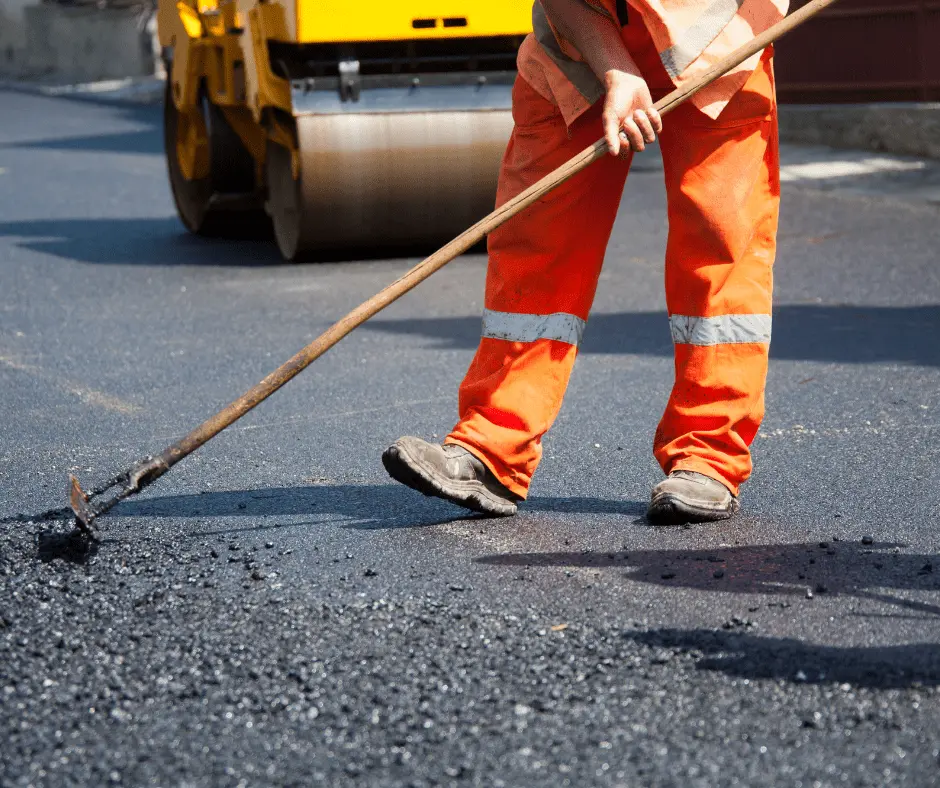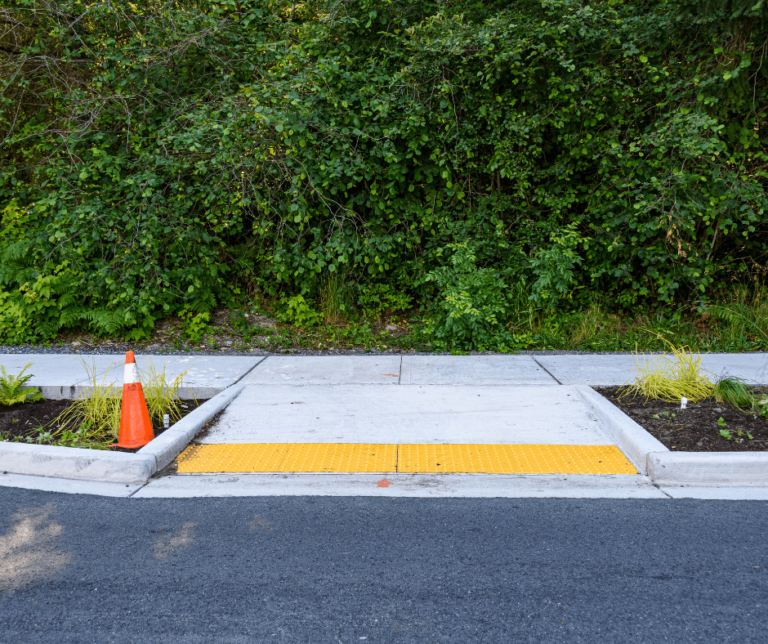- Home
- About
- Services
- Concrete Services
- Asphalt Repair
- Asphalt Paving
- New Pavement
- Asphalt Overlays
- Concrete Repair
- Sealcoating
- Removing & Replacing Asphalt
- ADA Compliance
- Milling & Resurfacing
- Parking Lot Striping
- Crack Filling
- Asphalt Maintenance Planning
- Snow Removal
- Project Gallery
- Blog
- Careers
- Contact
Asphalt Paving
Asphalt paving is an important part of any commercial project. From roadways to parking lots, asphalt plays a pivotal role in enhancing the look of your property or surface area and creating a safe and functional space for motorists and pedestrians.
What Exactly Is Asphalt?
Asphalt is a black, sticky mixture made from aggregates, binder, and filler. It’s applied to flat areas like roadways, parking lots, and walkways to ensure a durable, long-lasting surface. Commercial businesses choose asphalt for their paving needs due to its weather resistance and cost-effectiveness.

REQUEST A QUOTE
We will have one of our representatives get in touch with you!
The Benefits of Asphalt
1
Asphalt Is 100% Recyclable
Did you know that asphalt is America’s most-recycled material? Through a process called milling, old asphalt pavements can be removed, crushed, and mixed with fresh materials to create new pavement. It also requires less petroleum to make new aggregate.
2
Asphalt Is Safe
Asphalt is designed for vehicle use thanks to its smooth and skid-resistant surface. Asphalt’s dark color also helps reduce glare and melts snow and ice much faster than other materials. The contrast between asphalt’s dark color and pavement markings helps keep traffic safe and reduces risks for cyclists and pedestrians.
3
Asphalt Is Fast To Construct
Asphalt doesn’t need cure time, making for faster installation. In other words, motorists and pedestrians can use the asphalt soon after it’s applied to the surface. This leads to fewer delays and faster, safer transportation for all.
4
Asphalt Is Cost Efficient
Since asphalt is recyclable, it has a lower initial cost than other materials. Asphalt can also be staged, which means placing the asphalt on the initial base course before building a commercial building. The surface course can be applied once the building construction has been completed.
5
Asphalt Is Good for Noise Reduction
Traffic noise can be greatly reduced thanks to the proper application of asphalt. A dense layer of asphalt can help reduce traffic noise due to its porosity. Plus, the reduction in traffic noise will help keep your neighboring businesses and homeowners happy.
6
Asphalt Is Durable and Long-Lasting
The flexibility of asphalt allows larger loads and weights to be distributed over the pavement. It’s also adaptable to its environment and can withstand harsh weather conditions including high heat and freezing temperatures.
Our Step-by-Step Asphalt Paving Process
Applying asphalt isn’t a one-and-done process—that’s why it’s applied step-by-step. At Smooth Paving, we don’t just lay asphalt down without a plan. See how we do it below.
1. Demolish and Remove Existing Asphalt: First, we demolish existing and unnecessary structures like debris and plants. We will also mill and recycle any existing pavement. To do this, we level the area out and prepare it for proper drainage. Preparing for proper drainage is important in ensuring the asphalt is installed to last.
We can also make repairs by overlaying asphalt on old material.
2. Grading and Base Installation: Once we’ve prepared the worksite, our crew will begin developing a subbase. We’ll use a mix of different materials to create this base which is then installed and compacted to create a smooth layer. This layer acts as a canvas for the final asphalt layer. Once we install the subbase, we’ll lay a binder layer.
3. Asphalt Mix Production: Now it’s time to mix the actual asphalt. We do this by mixing a combination of aggregates, binder, and filler. The mix depends on the intended use of the pavement and whether or not it’ll see heavy traffic use. This mixture is mixed in an asphalt plant and is then transported to the worksite.
4. Transportation and Placement: We carefully transport the asphalt to the worksite where it will be laid using specialized equipment. The material is spread while considering the desired thickness. Then our crew compacts the surface to make sure all areas are equally filled.
5. Compaction: We compact the asphalt using heavy rollers. You’ve probably seen these rollers used before. The rollers compress the layers of asphalt, eliminating the risk of cracks or rutting from occurring.
6. Smooth Out the Surface Asphalt: Finally, it’s time to smooth it all out. We’ll either use additional rolling or a paver screed to complete this crucial step.

Asphalt Pavement vs Concrete
As a commercial business owner, you’re likely wondering if asphalt pavement or concrete would work better for your project. In the end, it simmers down to your budget and your intended use of the surface. Unsure which mix suits your project? Take a look at the differences below.
Choosing the Correct Asphalt Mix for Various Applications

Asphalt
Asphalt is easier to install, great for harsh climates, and is ideal for those on a budget. It’s also best fit for roadways and areas with heavy traffic.

Concrete
Concrete is made from aggregates, cement, and water. It’s durable, customizable, and great for paving driveways and sidewalks. However, it can crack under freezing temperatures.
Start Your Project With Chicago’s #1 Asphalt Paving Contractors
If you’re getting ready to start a commercial project, trust the team at Smooth Paving to get the job done. Our Chicagoland team has the tools and experience to take your project to the finish line. From removal to maintenance, let’s lay asphalt built to last. Get started with a free quote.
